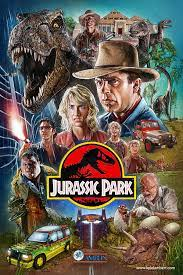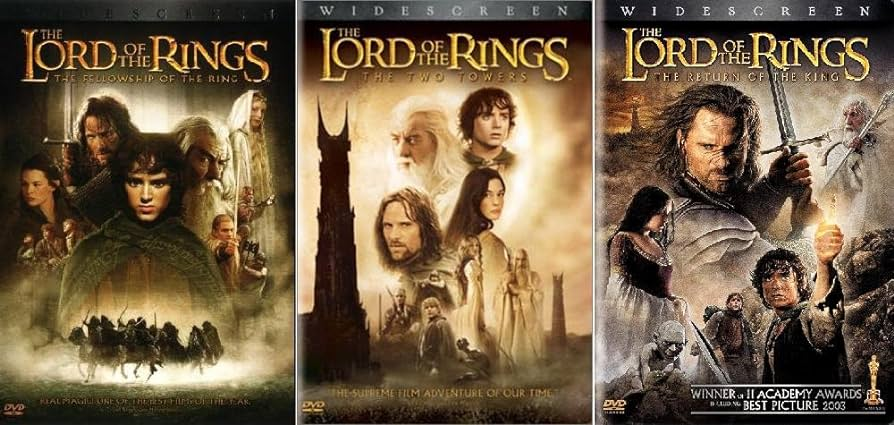Computer-generated artwork (CG artwork) refers to visual creations generated or produced using computer software and hardware rather than traditional artistic tools like paint, pencils, or brushes. This form of art leverages digital technology to create images, illustrations, animations, and 3D models, among other visual media. CG artwork encompasses many styles and genres, from photorealistic renderings to abstract and fantastical designs. Immerse yourself in a world of stunning CG artwork with our in-depth exploration.

CG artists use specialized software such as 3D modeling and rendering programs, digital painting applications, and computer animation software to bring their artistic visions to life. They manipulate digital elements like shapes, colors, textures, and lighting to craft visually stunning and often highly detailed art pieces. CG artwork has applications in various industries, including entertainment, advertising, video games, architecture, etc.
With the continuous advancement of technology, CG artwork continues to evolve, pushing the boundaries of what is possible in the realm of visual creativity. It allows artists to explore new dimensions, experiment with innovative techniques, and create immersive digital experiences that captivate audiences worldwide.

What Does CG Mean in Art?
In art, “CG” is an abbreviation that stands for “Computer Graphics” or “Computer-Generated.” It refers to artwork and images created or manipulated using computer software and hardware. CG art encompasses various digital art forms, including 2D and 3D computer-generated images, digital paintings, animations, and other visual media produced with computers and specialized software.
CG art has become increasingly prominent in various fields, including film, video games, advertising, graphic design, and illustration, as it allows artists and creators to work with digital tools to achieve unique and often highly detailed results. Advances in computer technology and software have expanded the possibilities for artistic expression and led to the development of various styles and techniques within CG art.
What Does CG Stand for in Films?
In filmmaking, “CG” typically means “Computer Graphics.” In this context, CG refers to using computer-generated imagery (CGI) to create visual elements, effects, or scenes within a film. This can include digitally generated characters, environments, special effects, and other visual elements that are added to or integrated with live-action footage to enhance storytelling, create fantastical worlds, or depict scenes that would be difficult or dangerous to film in reality. Computer graphics in film have become increasingly important and sophisticated, allowing filmmakers to achieve stunning and realistic visual effects that were once impossible or prohibitively expensive to create using practical effects alone.
What is the Difference Between a CG Artist and a 3D Artist?
The terms “CG artist” and “3D artist” are often used interchangeably, but there are some nuanced differences between the two roles in the field of computer graphics and digital art:
CG Artist (Computer Graphics Artist)
- CG artist is a broader term that can encompass a wide range of digital art forms, not limited to 3D.
- CG artists may work on 2D graphics, digital paintings, animations, visual effects, and other computer-generated visual media.
- They use various digital tools and software to create 2D and 3D artwork.
- CG artists might specialize in different aspects of computer graphics, including 3D modeling and animation, but they are not limited to 3D work.
3D Artist
- A 3D artist specifically focuses on creating three-dimensional artwork and objects using computer software.
- They are skilled in 3D modeling, which involves creating 3D models of characters, objects, or environments.
- 3D artists are often employed in industries like video games, animation, virtual reality, and architectural visualization, where creating 3D assets is critical.
- They may work on character modeling, environment design, texturing, rigging (adding skeletal structures for animation), and rendering.
In summary, a 3D artist is a subset of CG artists. While all 3D artists are CG artists, not all CG artists exclusively focus on 3D work. CG artists can work in various digital art forms, including 2D and 3D, whereas 3D artists specialize in creating three-dimensional assets and environments.
How Important is CGI in Films?
Computer-generated imagery (CGI) is incredibly important in modern filmmaking and has had a profound impact on the industry for several reasons:
Visual Effects
CGI allows filmmakers to create stunning and realistic visual effects that were previously impossible or prohibitively expensive to achieve with practical effects alone. From epic battles in fantasy films to realistic simulations of space travel, CGI has expanded the possibilities for visual storytelling.
World Building
CGI is instrumental in creating fantastical or otherworldly environments, settings, and creatures. It enables filmmakers to transport audiences to entirely new and immersive worlds in science fiction, fantasy, or animated films.
Character Animation
CGI is used extensively in character animation, especially for creating non-human or fantastical characters. This includes creatures, aliens, and even entirely digital characters like Gollum in “The Lord of the Rings” or the animals in “The Jungle Book.”
Safety and Practicality
CGI often depicts dangerous or physically challenging scenes without putting actors or stunt performers at risk. This enhances safety on set and allows for more daring action sequences.
Historical and Period Pieces
CGI can recreate historical settings, architecture, and vehicles, making it possible to tell stories set in different periods with accuracy and detail.
Editing and Post-Production
CGI is used in post-production to correct or enhance scenes. This can include removing unwanted elements from shots, adjusting lighting, or adding details that were missed during filming.
Consistency
CGI helps maintain visual consistency throughout a film. It ensures that visual elements remain the same across multiple shots and scenes, even if filmed under different conditions.
Creative Freedom
CGI allows filmmakers to explore unique and imaginative ideas, pushing the boundaries of storytelling and visual artistry.
Cost-Effective
In some cases, CGI can be more cost-effective than practical effects, particularly when dealing with complex or large-scale scenes.
While CGI is a powerful tool, its importance doesn’t diminish the value of practical effects or other filmmaking techniques. A combination of practical effects and CGI is often used to achieve the desired result. Ultimately, the importance of CGI in films lies in its ability to enhance storytelling, create captivating visuals, and bring to life stories and worlds that would otherwise be challenging or impossible to realize.
The Artistry of Movie Scenes in CG Technology
The artistry of movie scenes brought to life through CG (computer-generated) technology is a captivating blend of creativity and technical precision. CG artists and filmmakers craft immersive visual narratives, constructing worlds with intricate details and imaginative landscapes. Characters, whether lifelike humans or fantastical beings convey emotion and depth through carefully designed expressions and movements. The artistry extends to lighting, composition, and camera work, with each frame meticulously composed to evoke mood and captivate the audience’s attention. From breathtaking environments to seamless integration with live-action footage, the artistry of CG scenes represents a harmonious fusion of storytelling, technical expertise, and innovative creativity, pushing the boundaries of cinematic possibilities.
Scene Design and Emotion
Scene design in filmmaking, enhanced by CG (computer-generated) technology, is a potent means of evoking emotion. Through the creative deployment of digital environments, set pieces, and visual effects, filmmakers can craft scenes that transport audiences to emotionally charged worlds and situations. CG technology enables the construction of fantastical realms and breathtaking landscapes while also allowing for precise control of lighting and atmospheric elements, all of which contribute to a heightened emotional impact. Whether it’s the awe-inspiring grandeur of a CGI-created cityscape or the eerie beauty of a digitally crafted otherworldly setting, the fusion of scene design and CG technology empowers filmmakers to immerse viewers in emotionally resonant cinematic experiences.
Atmosphere Construction of the Scene
The construction of atmosphere within a scene using CG (computer-generated) technology is a nuanced art form in filmmaking. CG technology allows filmmakers to meticulously control and manipulate lighting, weather, and environmental details to create specific moods and atmospheres. Whether it’s the eerie and foreboding ambiance of a haunted forest at night, the dystopian gloom of a cyberpunk cityscape, or the ethereal beauty of an alien landscape, CG technology grants filmmakers the creative freedom to shape the atmosphere to suit the narrative.
The artistry of atmosphere construction with CG lies in carefully orchestrating visual elements, such as fog, rain, or even the play of light on digital surfaces. Additionally, the choice of color palettes, camera angles, and the integration of CG elements with live-action footage all contribute to the overall atmosphere. Whether aiming to evoke tension, wonder, or tranquility, CG technology empowers filmmakers to craft immersive and emotionally resonant scenes that transport the audience to the heart of the story’s mood and setting.
Spatial Extension of the Scene
The spatial extension of scenes through CG (computer-generated) technology is a transformative facet of modern filmmaking. With CG, filmmakers can expand physical environments and stretch the boundaries of spatial storytelling, transcending the limitations of practical sets and locations. Whether extending the sprawling vistas of a fantasy kingdom, creating intricate and visually stunning alien worlds, or seamlessly blending real and virtual spaces, CG technology offers filmmakers unprecedented creative control over spatial dimensions. This artistry involves meticulous attention to detail, from digitally extending backgrounds to enhancing depth and perspective, allowing directors to craft immersive, expansive, and visually captivating settings that transport audiences to new and awe-inspiring realms.
Scene Literature and Art
The fusion of scene design, literature, and artistry through CGI (computer-generated imagery) technology represents a dynamic evolution in storytelling. It allows filmmakers to bring literary worlds and artistic visions to life with unprecedented fidelity and imagination. By harnessing CGI, directors, and artists can meticulously craft scenes that faithfully capture the essence of literary works, recreating intricate details and environments described in books.
Whether it’s the intricate landscapes of a beloved novel, the fantastical creatures of folklore, or the dreamlike settings of poetry, CGI technology serves as a bridge between literature and cinematic art, enabling audiences to visually immerse themselves in the rich tapestry of the literary imagination. This creative synergy between literature and CGI technology broadens the possibilities for storytelling and fosters a deeper appreciation for the intersection of literature, art, and film.
CG short film “Fallen Art” – by Platige Image
Prospects of CG ART and Technology in Films and its Scenes
The prospects of CG (Computer Graphics) technology in film scenes continue to expand and evolve, offering numerous advantages to filmmakers and enhancing the cinematic experience in various ways:
Creative Freedom
CG technology allows filmmakers to bring virtually any concept or idea to the screen, enabling the creation of fantastical worlds, creatures, and visual effects that were once impossible or prohibitively expensive to achieve with practical effects.
Immersive Environments
Filmmakers can use CG to construct immersive and highly detailed environments, transporting audiences to otherworldly realms, historical settings, or futuristic landscapes.
Cost-Effective Solutions
While initial CG development can be expensive, it often proves cost-effective in the long run, especially for scenes requiring costly practical effects or on-location shoots.
Safety
CG technology allows filmmakers to depict dangerous or challenging scenes without putting actors or crew at risk, enhancing safety on set.
Consistency
CG ensures visual consistency throughout a film, maintaining the same look and feel across multiple shots and scenes.
Realistic Visual Effects
CG technology continues to advance, enabling the creation of highly realistic visual effects, including complex simulations of physics, weather, and natural phenomena.
Character Animation
CG is instrumental in creating lifelike and expressive digital characters, opening up new avenues for storytelling, especially in animation and fantasy genres.
Adaptation of Literature
It facilitates faithful adaptations of literary works by bringing to life the rich and imaginative settings described in books.
Innovative Filmmaking
Filmmakers can push the boundaries of storytelling with innovative techniques and styles, creating visually stunning and unique cinematic experiences.
Digital Restoration and Enhancement
CG technology can restore and enhance older films, improving their visual quality and preserving cinematic classics.
Integration with Live Action
The seamless integration of CG elements with live-action footage enhances the cinematic experience, allowing for more immersive storytelling.
Global Collaboration
CG technology enables filmmakers to collaborate across geographical boundaries, with artists and technicians working on scenes remotely.
As CG technology advances, it opens up exciting new possibilities for filmmakers to push the boundaries of storytelling and visual artistry. However, it’s important to balance CGI and practical effects to ensure that the artistry and storytelling remain at the forefront of filmmaking.
A Few Examples of Movies with CG Art
Avatar (2009)

Directed by James Cameron, “Avatar” is a groundbreaking science fiction film known for its stunning use of CG technology to create Pandora’s lush and immersive world.
Avatar | Official Trailer (HD) | 20th Century FOX
[Jwatchnow link=”https://www.amazon.com/Avatar-Sam-Worthington/dp/B0B6583PVV/ref=sr_1_2?crid=AFON9RKFF88R&keywords=avatar&qid=1697400487&sprefix=avat%2Caps%2C1099&sr=8-2″ watchon=”Amazon”]
Jurassic Park (1993)

Directed by Steven Spielberg, this film is a classic example of how CG technology was used to bring dinosaurs to life, revolutionizing the visual effects industry.
Jurassic Park 3d Extended Trailer
[Jwatchnow link=”https://www.amazon.com/Jurassic-Park-Sam-Neill/dp/B009CGKW10/ref=sr_1_2?crid=17FRO4605BESI&keywords=jurassic+park&qid=1697400235&sprefix=jurrasic+park%2Caps%2C447&sr=8-2″ watchon=”Amazon”]
The Lord of the Rings Trilogy (2001-2003)

Directed by Peter Jackson, these films extensively used CG for epic battles, creatures like Gollum, and the creation of the fantastical realms of Middle-earth.
The Avengers (2012)

The Marvel Cinematic Universe relies heavily on CG to depict superhuman powers, alien invasions, and intricate action sequences, making the entire franchise showcase CG technology.
The Jungle Book (2016)

This film, directed by Jon Favreau, combined live-action with photorealistic CG animals to tell the classic story of Mowgli and his animal friends.
The Jungle Book Official Big Game Trailer
[Jwatchnow link=”https://www.amazon.com/Jungle-Book-Theatrical-Bill-Murray/dp/B01E60YZNM/ref=sr_1_1?crid=3AE2I90CSXHPN&keywords=The+Jungle+Book%22+%282016%29%3A&qid=1697400892&sprefix=the+jungle+book+2016+%2Caps%2C717&sr=8-1″ watchon=”Amazon”]
Inception (2010)

Directed by Christopher Nolan, “Inception” used CG to create mind-bending visual effects, including scenes with cities folding in on themselves.
Inception (2010) Official Trailer #1 – Christopher Nolan Movie HD
[Jwatchnow link=”https://www.youtube.com/watch?v=ArRqeBKBsEU” watchon=”YouTube Movies”]
Gravity (2013)

This film, directed by Alfonso Cuarón, used CG to create the vastness of space and the realistic portrayal of zero-gravity environments.
Gravity – Official Main Trailer [2K HD]
[Jwatchnow link=”https://www.amazon.com/Gravity-Sandra-Bullock/dp/B00HJ957BC/ref=sr_1_3?crid=3A8HWCD8SG73F&keywords=gravity&qid=1697400629&sprefix=gravity%2Caps%2C410&sr=8-3″ watchon=”Amazon”]
Guardians of the Galaxy (2014)

Another Marvel film, “Guardians of the Galaxy,” relied on CG technology for its colorful and otherworldly characters and settings.
Marvel’s Guardians of the Galaxy – Trailer 1 (OFFICIAL)
[Jwatchnow link=”https://www.amazon.com/Guardians-Galaxy-Theatrical-Chris-Pratt/dp/B00QROJ94Q/ref=sr_1_4?crid=1AWD4KSO4Q3RO&keywords=guardians&qid=1697400663&sprefix=gard%2Caps%2C484&sr=8-4″ watchon=”Amazon”]
Interstellar (2014)

This sci-fi epic, directed by Christopher Nolan, used CG to depict black holes, wormholes, and distant planets.
Interstellar – Trailer – Official Warner Bros. UK
[Jwatchnow link=”https://www.youtube.com/watch?v=vrjPsQYHU1c” watchon=”YouTube Movies”]
Mad Max: Fury Road (2015)

While known for its practical effects and stunts, this film also used CG to enhance its post-apocalyptic world and action sequences.
Mad Max: Fury Road – Official Main Trailer [HD]
Life of Pi (2012)

Directed by Ang Lee, this film used CG to bring the titular character’s journey on a lifeboat with a Bengal tiger to life, including creating a digital tiger.
Life Of Pi – Official Trailer #1 [HD]
[Jwatchnow link=”http://www.youtube.com/watch?v=wFfWjOg9XaE” watchon=”YouTube Movies”]
The Revenant (2015)

CG technology was used to enhance the harsh natural environments and for some of the film’s more dangerous sequences.
THE REVENANT | Official Trailer [HD] | 20th Century FOX
[Jwatchnow link=”https://www.youtube.com/watch?v=y75p0Ocxg0A” watchon=”YouTube Movies”]
These movies exemplify how CG technology has transformed filmmaking by enabling the creation of visually stunning and immersive cinematic experiences.
Videos
How Do VFX Artists Make CG Animals?
Top Amazing Work in movies (VFX) (CGI) before and after shot
How I Create Cinematic CG Environments | FULL BREAKDOWN
CGI Animated Short Film: “From Artists to Artists”
7 Classic Movie Tricks That Led To Modern CGI | Movies Insider












